Following on from the popular post “A step by step guide for setting up a kick ass re-marketing campaign in Google AdWords”, this guide will go through each step involved in setting up a Facebook campaign with tips at each stage to optimise your campaigns performance.
I’m going to presume you already have a Facebook page for your business and you have a clear idea of what you want to advertise and who to (if you don’t, get that clearly defined before you start or you’ll just be wasting money). For the purposes of this guide we will go through the steps of setting up an advert to promote our reseller hosting product.
To get started click on “Promote with an ad” below your profile picture
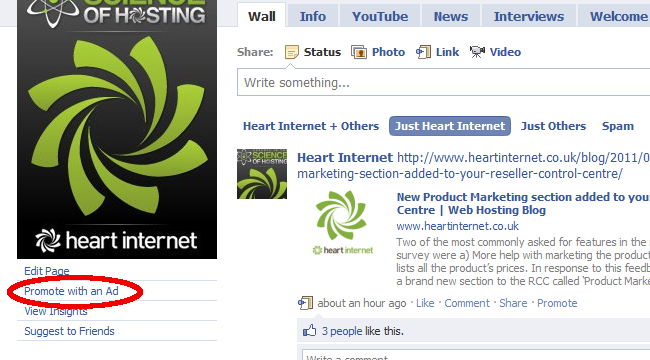
This will take you to the “Advertise on Facebook” page
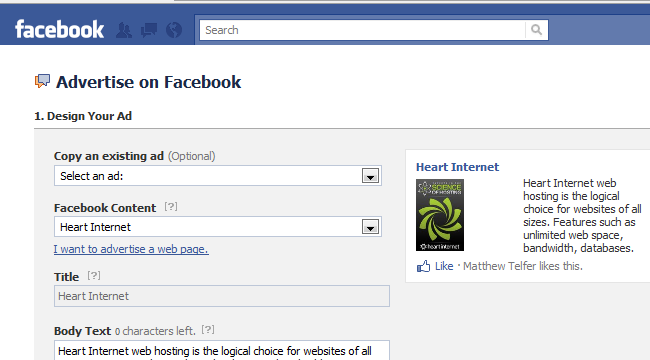
1. Design your ad
Because I want to send traffic to our reseller hosting product page my first job is to tell Facebook I want to advertise a web page. I would also add some tracking to the URL so you can look beyond impressions and clicks.
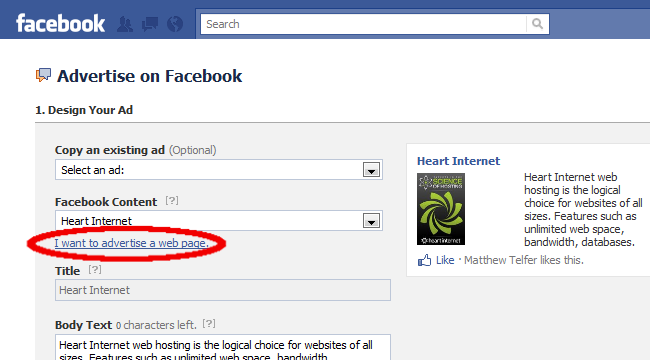
I now need to write my advert. Facebook ads share a lot in common with Google’s AdWords, albeit they allow you to use an image as well. The rules I apply to the Facebook ad text are very similar to those I do for AdWords:
• Use your main keyword at the start of the title to attract scanning eyes. People will literally look at the first few characters and decide whether to read on or look elsewhere.
• Create a headline grabbing statement to make them read more
• Communicate the core USPs and benefits of the product to the audience in the main body.
Choose an image that is clear and ofa high quality. Don’t make people squint to read any text and make sure the image is related to your product/ service. For example, pretty girls will probably attract a male’s eyes, but they won’t click once they realise the image and the content are unrelated.
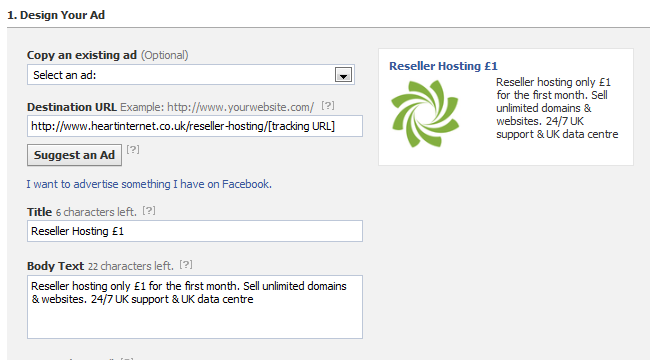
2. Targeting
Who are your audience? Facebook has some great targeting tools but they are useless if you can’t answer that question. For this reseller hosting campaign we want them to be based in the UK, over 18 and we don’t care about the gender.
We are also going to focus on web designers for this campaign, so we need to have a brain storm about the types of interests that group is likely to state in their Facebook profile. Ideas include the obvious (e.g. “web design”), the types of sites they like (e.g. smashing magazine”) and the software they might use (e.g. “Linux”). Facebook also offers suggestions related to your topic to help you expand your list.
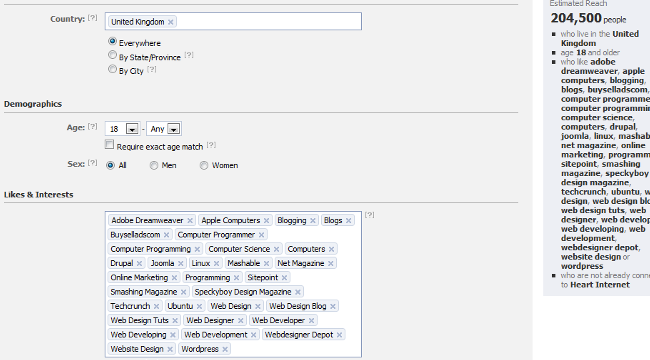
Because my primary concern is new sales and brand awareness, I don’t want to show the advert to people who are already connected to us. With this in mind, underneath “Target users who are not already connected to” I have put “Heart Internet”.
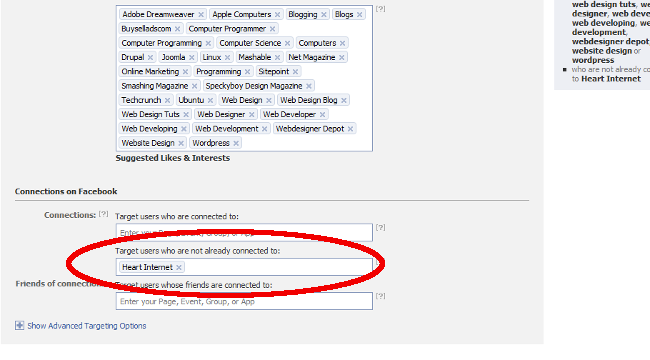
3. Campaigns, Pricing and Scheduling
Give your campaign a logical name that will make sense if weeks to come (don’t call it anything like “Ad 1”). Budget setting is always tricky, especially at the start.Facebook is similar to AdWords in that you are essentially entering in to an auction with other advertisers to get yourself in front of the users. The more you bid, the more likely you are to be shown. Your daily budget should reflect how much you are willing to pay per visitor. If you are going to bid 0.50USD per click, a budget of 50USD will send you 100 visits. Is that enough traffic to convert and make a profit on the 50USD?
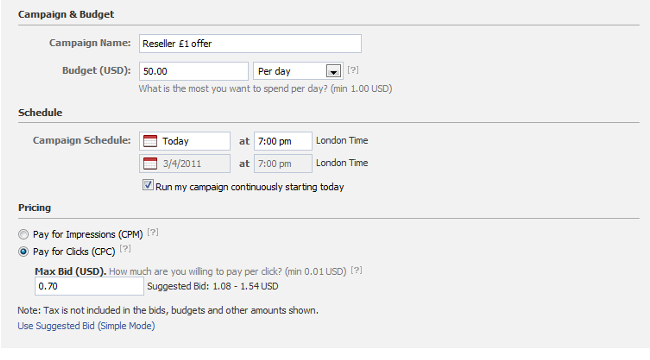
None of this is set in stone and you can adjust your bids each day based on your performance levels. Start with an amount and a bid you are comfortable with and can afford and make changes as you see fit based on the ad’s performance.
Once you are happy with all your settings, click on “Place order”

Tracking performance
You will then be taken to Facebook’s campaign management control panel. From here you can track ad impressions, clicks and how much you have spent.
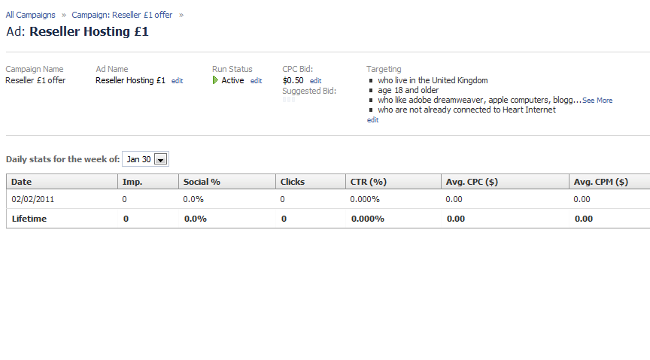
These are all very useful stats but they won’t tell you how many customers you got from this campaign or how your visitors interacted with your site once they arrived. I would recommend adding 3rd party tracking to your destination URL (e.g. Google analytics) which will give you the necessary data.
Comments
Please remember that all comments are moderated and any links you paste in your comment will remain as plain text. If your comment looks like spam it will be deleted. We're looking forward to answering your questions and hearing your comments and opinions!